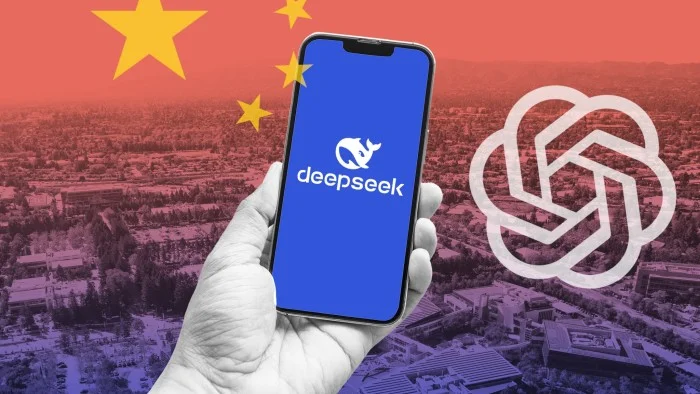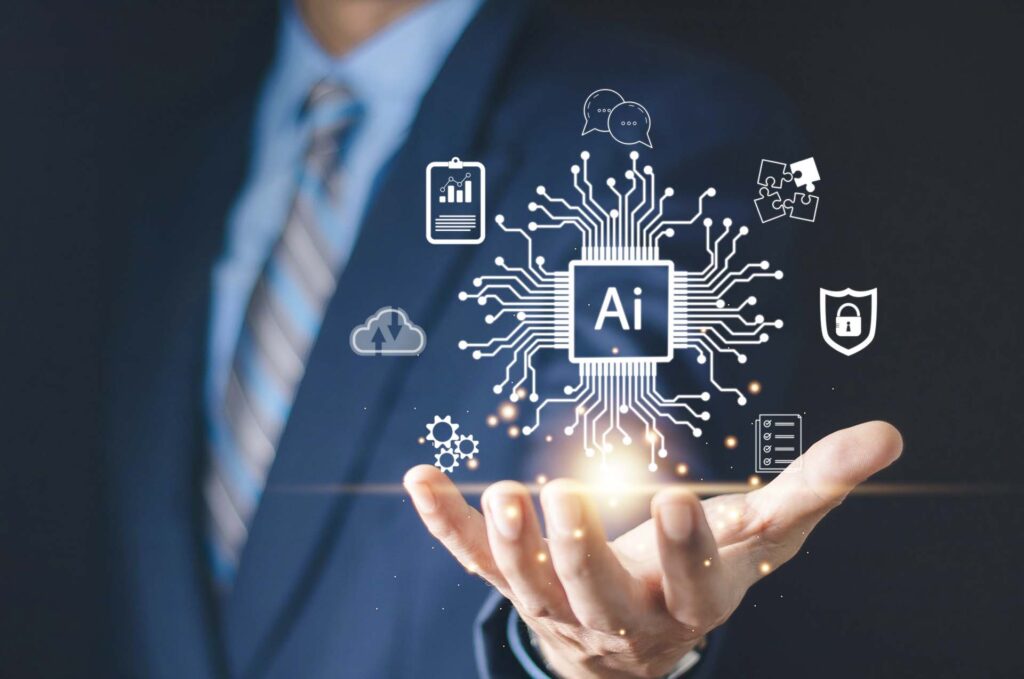The world of artificial intelligence is constantly evolving, and the introduction of the DeepSeek R1 AI Model has stirred the global financial markets in unprecedented ways. Designed to provide real-time insights and predictions, this cutting-edge AI system has inadvertently triggered a selloff in tech stocks across the United States and Japan. This article delves into the mechanics of the model, its market influence, and what it means for investors and the tech industry at large.
What Is the DeepSeek R1 AI Model?
The DeepSeek R1 AI Model is an advanced artificial intelligence system designed for financial market analysis and prediction. It leverages machine learning, big data, and real-time analytics to forecast trends, identify risks, and optimize trading strategies. Developed by a eading AI research firm, the model’s primary aim is to enhance decision-making for institutional investors by providing actionable insights into market movements.

What sets DeepSeek R1 apart is its ability to process vast volumes of data at lightning speed. Unlike traditional financial models, it incorporates diverse data points, including market sentiment, geopolitical factors, and even social media trends, to deliver predictions with high accuracy.
The Trigger: How DeepSeek R1 Prompted a Market Selloff
While the DeepSeek R1 AI Model was designed to support better investment decisions, its latest market analysis inadvertently triggered a wave of selloffs in tech stocks in the United States and Japan. Here’s how it unfolded:
- Aggressive Risk Assessment:
The model issued a high-risk alert for tech stocks, identifying potential vulnerabilities such as overvaluation, declining growth prospects, and rising interest rates. - Automated Trading Systems:
Many institutional investors rely on automated trading systems that integrate AI insights like those from DeepSeek R1. Upon receiving the high-risk alert, these systems initiated sell orders, creating a domino effect. - Market Sentiment Amplification:
News of the selloff spread rapidly, triggering panic among retail investors. This further accelerated the downward trend in stock prices.
Impact on US and Japan Tech Stocks
The selloff caused by the DeepSeek R1 AI Model has sent shockwaves through the tech industry, influencing stock markets in the United States and Japan and reshaping investor sentiment. This section examines the deeper ramifications of the event, highlighting its impact on stock performance, market behavior, and future industry strategies.
One of the immediate effects of the DeepSeek R1 AI Model was the significant drop in the valuation of leading tech companies. Giants like Apple, Amazon, Google, Sony, and SoftBank saw their stock prices tumble by 8-10% within 48 hours. This decline wasn’t limited to these major players; the ripple effect extended across the broader tech ecosystem, causing widespread concern among stakeholders.
This sharp drop reflects how sensitive tech stocks are to market predictions, especially those generated by advanced AI models like DeepSeek R1. Investors are now questioning whether current valuations truly reflect the sector’s growth potential or if they were inflated by market speculation.
The Profound Implications of the DeepSeek R1 AI Model on the Tech Sector
The selloff caused by the DeepSeek R1 AI Model has sent shockwaves through the tech industry, influencing stock markets in the United States and Japan and reshaping investor sentiment. This section examines the deeper ramifications of the event, highlighting its impact on stock performance, market behavior, and future industry strategies.
Decline in Major Tech Stock Valuations
One of the immediate effects of the DeepSeek R1 AI Model was the significant drop in the valuation of leading tech companies. Giants like Apple, Amazon, Google, Sony, and SoftBank saw their stock prices tumble by 8-10% within 48 hours. This decline wasn’t limited to these major players; the ripple effect extended across the broader tech ecosystem, causing widespread concern among stakeholders.
This sharp drop reflects how sensitive tech stocks are to market predictions, especially those generated by advanced AI models like DeepSeek R1. Investors are now questioning whether current valuations truly reflect the sector’s growth potential or if they were inflated by market speculation.
Amplified Market Volatility
The selloff triggered by the DeepSeek R1 AI Model exacerbated volatility in major stock indices, such as the Nasdaq in the US and the Nikkei 225 in Japan. The model’s real-time risk alerts led to automated trading systems initiating sell orders, which caused sudden and dramatic market movements.
This volatility impacted not only institutional investors but also retail traders, many of whom reacted emotionally to the sharp declines. The increased turbulence has sparked conversations about the role of AI models in influencing market stability and the need for regulatory oversight.
Erosion of Investor Confidence
The widespread selloff has raised questions about the predictive power of AI models and their influence on market sentiment. While some investors appreciate the accuracy of the DeepSeek R1 AI Model in identifying vulnerabilities, others are concerned about its potential to amplify market instability.
This erosion of confidence is particularly pronounced among retail investors, who are more susceptible to panic-driven decision-making. As a result, there is growing demand for transparency in how AI models like DeepSeek R1 operate and the data they use to generate predictions.
Impact on Emerging Technologies and Startups
The selloff didn’t just affect established tech giants; it also had a significant impact on smaller startups and emerging technologies. Many startups rely on strong market performance to secure funding and attract investors. The downturn caused by the DeepSeek R1 AI Model has made it more challenging for these companies to maintain investor interest and secure capital for innovation.
Emerging technologies, such as artificial intelligence, blockchain, and quantum computing, are particularly vulnerable to market fluctuations. As these sectors face funding constraints, the pace of innovation may slow, affecting long-term industry growth.
Shift in Strategic Focus for Tech Companies
The incident has prompted tech companies to reassess their strategies. Many firms are now prioritizing financial resilience over aggressive growth. Initiatives such as cost-cutting, diversifying revenue streams, and strengthening core business operations are gaining prominence.
Additionally, there is a growing emphasis on transparency in financial reporting and performance metrics to rebuild investor trust. Companies are also exploring ways to leverage AI insights responsibly to minimize the risk of market disruptions.
Regulatory Considerations and AI Accountability
The selloff triggered by the DeepSeek R1 AI Model has caught the attention of regulators and policymakers. As AI-driven models become more integral to financial markets, there is an urgent need for regulations to ensure their responsible use. Key areas of focus include:
- Transparency: Requiring AI developers to disclose the algorithms and data sources used in their models.
- Ethical Standards: Establishing guidelines to prevent AI models from creating unintended market disruptions.
- Investor Protection: Implementing safeguards to protect retail investors from the cascading effects of AI-driven selloffs.
These measures aim to strike a balance between innovation and market stability, ensuring that AI models like DeepSeek R1 contribute positively to the financial ecosystem.
The Future of AI-Driven Financial Insights

Despite the challenges posed by the selloff, the DeepSeek R1 AI Model has demonstrated the transformative potential of AI in financial markets. As developers refine these models to minimize unintended consequences, they are likely to play an even more significant role in shaping investment strategies and market behavior.
Moving forward, companies and investors must learn to adapt to this new reality by understanding how AI-driven insights impact market dynamics and incorporating them into their decision-making processes.
The incident has also highlighted the need for educational initiatives to help market participants better understand the implications of AI technologies. By fostering greater awareness and knowledge, the industry can harness the power of AI while mitigating its risks.
Key Takeaway
The selloff triggered by the DeepSeek R1 AI Model serves as a wake-up call for the tech sector and financial markets. While the model’s insights revealed critical vulnerabilities, its influence on market behavior underscores the need for responsible AI integration and balanced decision-making.
By learning from this experience and adopting proactive measures, the tech industry can emerge stronger, more resilient, and better equipped to navigate the challenges of an AI-driven future.
Why Did DeepSeek R1 Predict a Downtrend?
The predictions of the DeepSeek R1 AI Model were based on several factors:
- Overvaluation in the Tech Sector:
Many tech companies were trading at valuations significantly above historical averages, raising concerns about a potential market correction. - Macroeconomic Factors:
Rising interest rates and inflationary pressures were identified as risks that could impact tech companies’ profitability. - Geopolitical Tensions:
Trade tensions between major economies, coupled with global semiconductor shortages, further contributed to the pessimistic outlook.
Lessons Learned from the DeepSeek R1 Selloff Incident
The selloff triggered by the DeepSeek R1 AI Model serves as a valuable case study for investors and market participants:
1. The Double-Edged Sword of AI
AI models like DeepSeek R1 offer unparalleled insights but can also amplify market movements. This incident highlights the need for careful integration of AI into trading systems.
2. Importance of Human Oversight
While automation is powerful, human oversight remains crucial. Investors must balance AI-driven insights with their own judgment to avoid overreactions.
3. The Need for Diversification
The selloff underscores the importance of a diversified portfolio. Relying too heavily on tech stocks can expose investors to significant risks during market downturns.
Future Implications of the DeepSeek R1 AI Model
The influence of the DeepSeek R1 AI Model extends beyond this selloff. Here’s what the future may hold:

Increased Scrutiny
Regulators may investigate the role of AI models in market volatility, potentially leading to new guidelines for their use in financial markets.
Refinement of AI Models
Developers of AI models like DeepSeek R1 are likely to refine their algorithms to minimize unintended market disruptions while maintaining their predictive accuracy.
Broader Adoption
Despite this incident, the success of the DeepSeek R1 in identifying risks is likely to drive broader adoption of AI in financial markets.
















